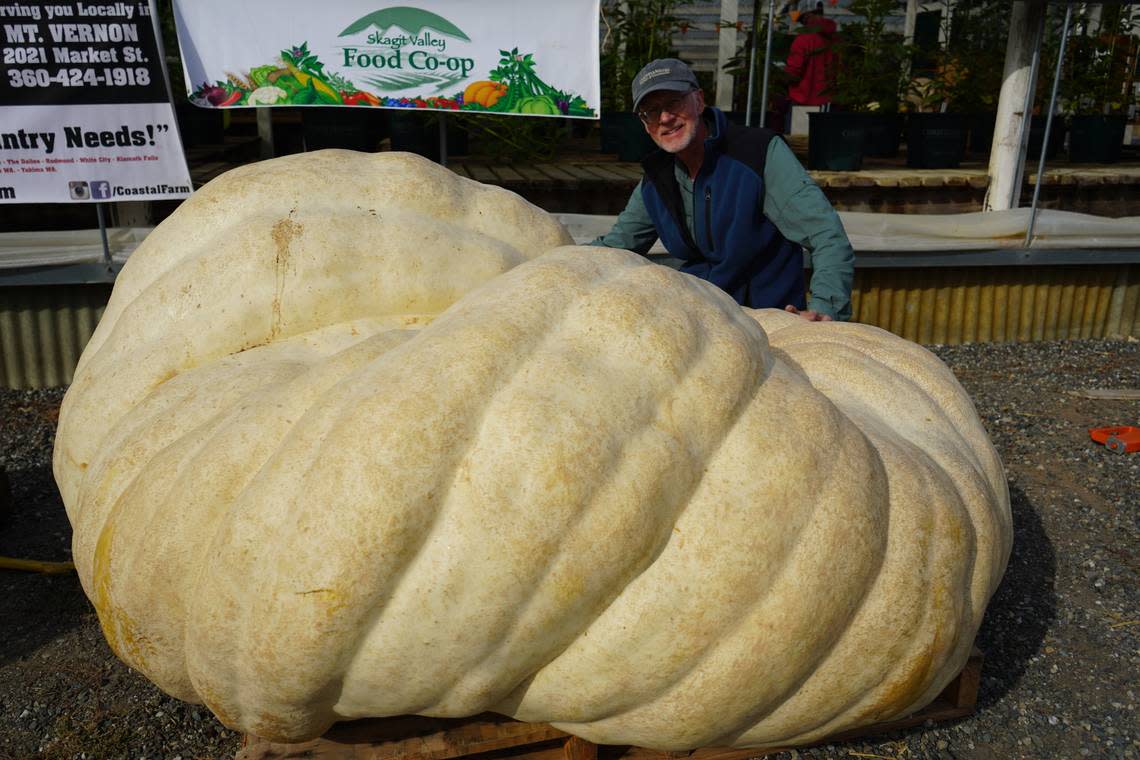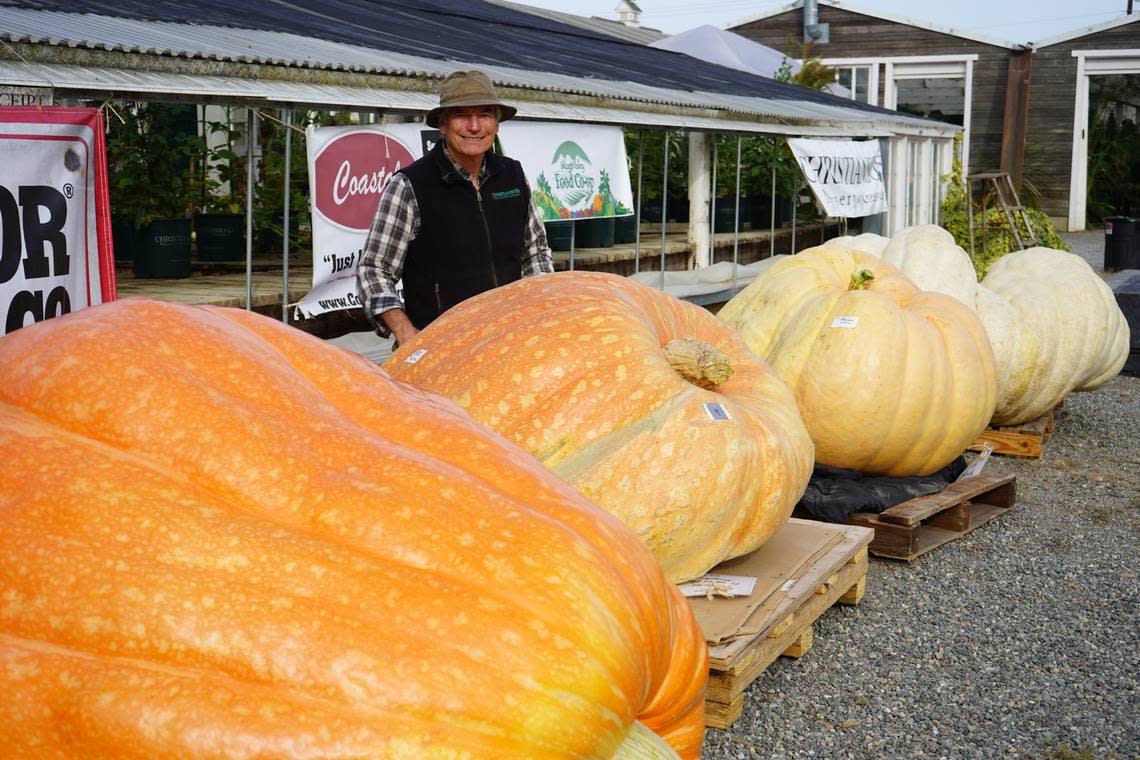‘It’s like seeing an elephant!’ Five things you didn’t know about giant pumpkins
The 12th annual Skagit Valley Giant Pumpkin Festival weighed in some of its heaviest pumpkins ever Saturday, Sept. 17.
The first-place pumpkin this year came from Sumner, Wash., and weighed 1,614 pounds. The second- and third-place pumpkins weighed in at 1,472 pounds and 1,277.5 pounds, respectively.
A Lynden man’s pumpkin, weighing in at 936 pounds, took home the fourth-place prize.
The top winners come away with a cash prize and bragging rights. The biggest pumpkin ever weighed at the Skagit Valley Giant Pumpkin Festival at Christianson’s Nursery in Mount Vernon came in two years ago at about 1,900 pounds.
According to Guinness World Records, the heaviest pumpkin ever was grown last year in Italy. It weighed 2,702 pounds.
Here are five things you likely didn’t know about giant pumpkins:
1. They only take about six months to grow.
Growers at the Skagit Valley Giant Pumpkin Festival said people often assume they take years to grow. But it’s actually a fairly quick process.
“Everybody thinks you grow them in the basement for years. Nope,” said fourth-place prize winner and Lynden resident Glenn Snodgrass.
Growers typically germinate their pumpkins in April and they are fully grown by October.

2. Their size is mostly based on genetics.
“People always think you feed them milk,” Snodgrass said. “That would kill them.”
The seeds usually come from other giant pumpkins. According to Christianson’s Nursery co-owner John Christianson, a single giant pumpkin seed can sell for hundreds of dollars if the pumpkin is big enough.
Lee Roof, who took home the second-place prize, said after the seed is planted, it’s all about regular watering and fertilizer.
3. Usually the biggest are not the best looking.
“They get more attractive as they get smaller,” said Christianson. “Gravity seems to spread them out when they reach a certain weight so you just don’t have a perfect-looking pumpkin that’s 1,600 pounds. It’s going to look kinda ugly.”
And there’s a prize for that, too. In addition to taking home second-place for weight, Lee Roof’s pumpkin also won “Ugliest Pumpkin” for its sunken shape and color.

4. They don’t get made into giant pumpkin pie.
They don’t always taste good. But according to Christianson, they make good compost for growing other crops. They can also make good feed for pigs or cattle.
“I’ll sometimes give them to a friend of mine who owns cattle and let his cattle have them,” Roof said.
5. Anybody can grow one!
“It’s not impossible to grow a 1,000-pound pumpkin if you have the information,” Christianson said.
A lot of giant-pumpkin-growing tips and tricks are easily accessible on the internet from thousands of growers worldwide. It can be costly, but both Roof and Snodgrass agree — most growers aren’t in it for the profit.
“It’s a lot of crazy work. But it’s fun,” Snodgrass said.
